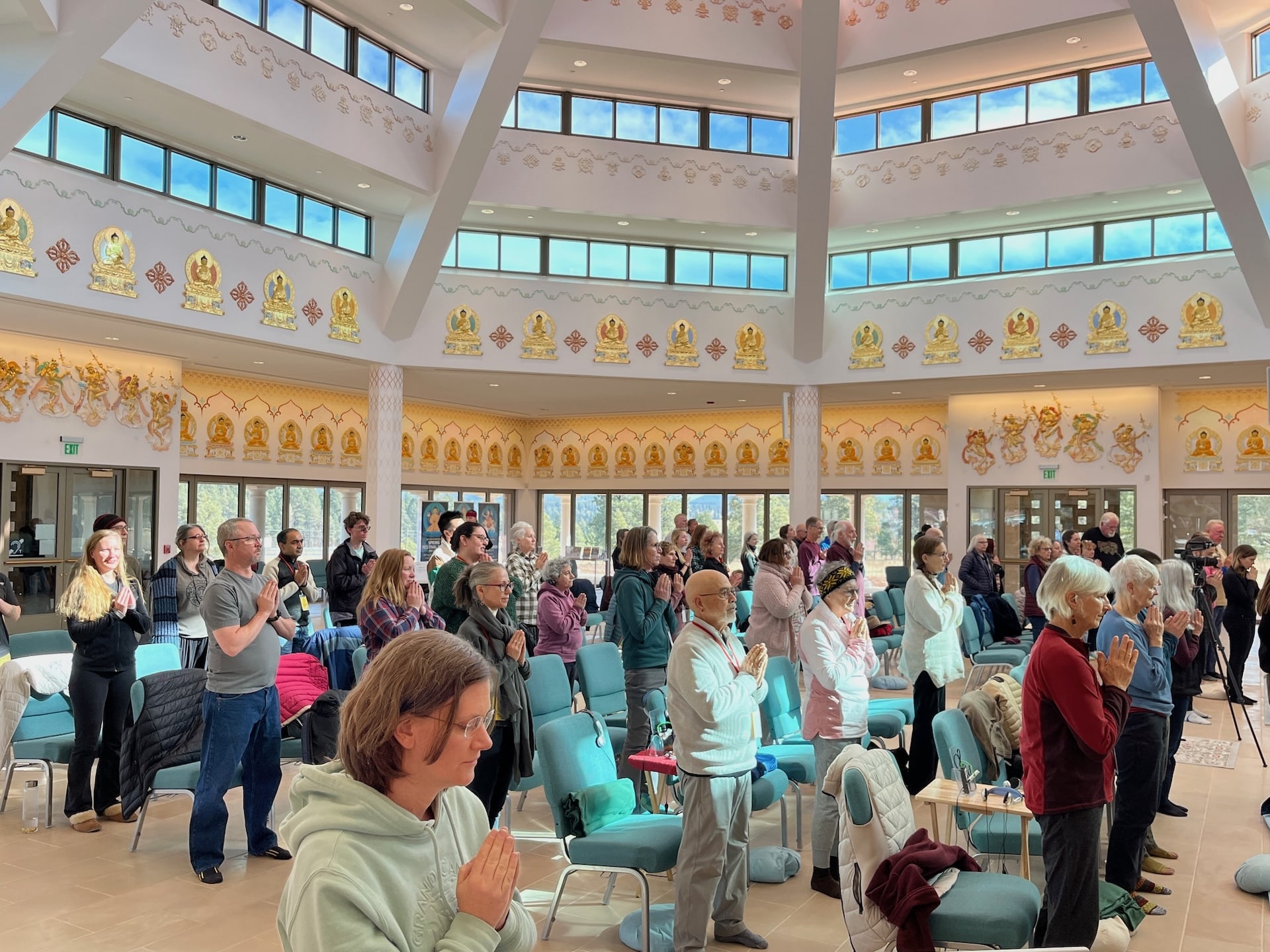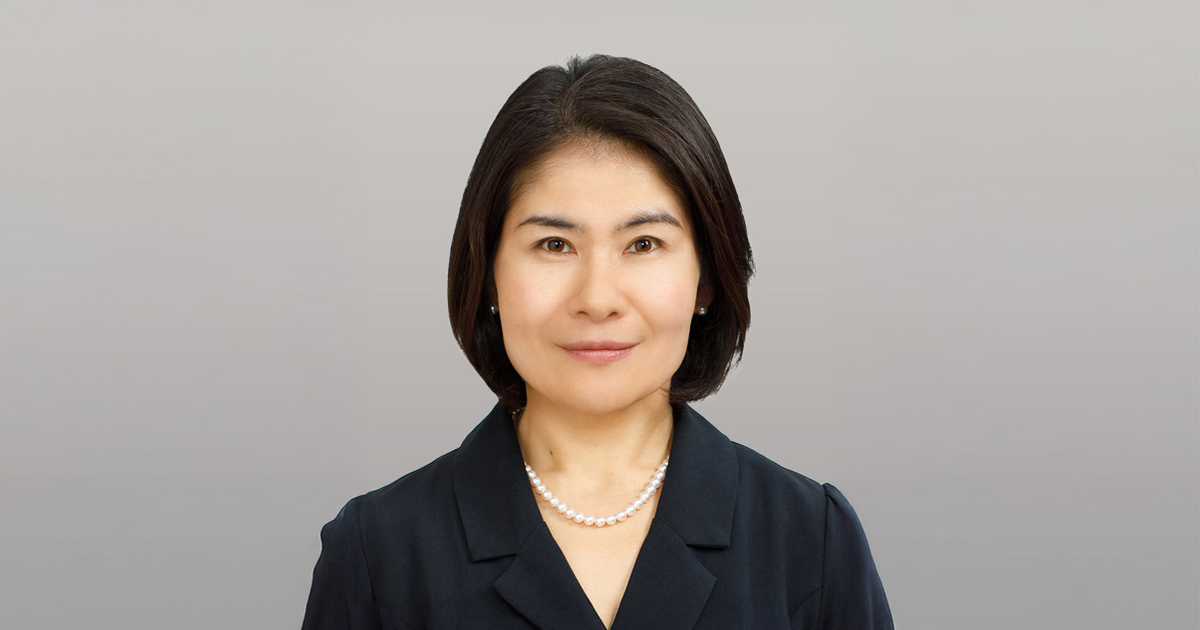Mãgha Pūjã
A Thai Forest Tradition teacher on the significance of the Buddhist holiday The post Mãgha Pūjã first appeared on Tricycle: The Buddhist Review. The post Mãgha Pūjã appeared first on Tricycle: The Buddhist Review.

Editor’s note: Tomorrow is Mãgha Pūjã, sometimes called Sangha Day, the Buddhist holiday that commemorates the occasion when 1,250 arahants assembled to hear a teaching from the Buddha. The gathering, which took place in a grove near the city of Rajagaha, was unplanned and came together spontaneously on a full moon during the third lunar month, or Mãgha. Venerated Thai Forest Ajaan Mahā Boowa Ñãṇasampanno says that on this same day, the Sakyamuni Buddha revealed he would be entering into parinibbana— also called “final nirvana” or “complete nirvana”—in three months’ time. The following teaching is taken from a talk given by Ven. Ajaan Mahā Boowa on February 15, 1976, marking this auspicious event.
– Mike Sheffield
Mãgha Pūjã is the day when the Lord Buddha declared his intention to let go of life, taking leave of the world of samsara and the prison of the cycle of birth and death (Pali: vatta cakka). He chose to abandon his body and discard the very heavy burden he carried for eighty years. He had borne this extremely oppressive load during all that time, and it was never anything but a burden. Such is the nature of the human body (dhātu khandha).
By contrast, other things are sometimes heavy and sometimes light, allowing us to occasionally catch a breath. For example, food and water are heavy when we have to carry them, but as we steadily use them, they become lighter and lighter. But we have been bearing the load of our body since birth, and it never gets lighter. It’s always heavy. As we advance in years and our strength declines, it seems increasingly heavy. That is why the Buddha declared: “Bhārā have pañcakhandhā”—these five groups are an extremely heavy load.
Apart from shouldering the heavy load of this body, we also have painful feelings, memories, thoughts, and consciousness to put up with—all burdensome. Not only are they oppressive but they are also sharp-pointed, so they pierce through the body and the heart.
The Lord Buddha put up with this body until he was eighty. To put it simply, he must have said: “Oh! This body is beyond bearing. It is time to leave it!” Thus he declared that in three months’ time, he would abandon life and lay down the burden. He made the decision on the full moon day of the third lunar month.
On that very same day, 1,250 noble disciples (ariya sāvakas) assembled together, spontaneously, without invitation, each coming [of their] own initiative. The Lord Buddha then expounded the teaching to the enlightened (arahant) disciples, delighting them with the bliss of the buddhadhamma. This gathering thus became [known as] the Pure Assembly.
Here is a brief outline of what was said on that day:
Sabbapāpassa akaranam kusalassūpasampadā
Sacitta parlyodapanam etam Buddhānasāsanam
Anūpavādo anūpaghāto pāṭimokkhe ca samvaro
Mattaññutā ca bhattasmim pantañca sayanāsanam
Adhicitte ca āyogo, etam Buddhānasāsanam
Sabbapāpassa akaranam—to refrain from unwholesome actions, which give rise to all kinds of suffering (dukkha). The evil nature of the heart is critically important. The bad actions of body and speech have their limitations, but the evil of the mind (citta), which depresses and dulls itself, is prompted by our own thinking and imagining. The agents that push and compel the mind into sadness and depression are those things in the mind that are already murky and defiled. The Lord Buddha called them the defilements (kilesas). They are those factors that maneuver perception (saññā) and mental formations (sankhāra) into functioning. They cause the mind to become gloomy and disconsolate. Evil acts of wrongdoing are not merely actions like robbery, looting, and plundering—or evil on a gross level—but also the intermediate and more subtle evils that we continually generate in our hearts all the time. [Such evils] automatically bring feelings of depression. The heart that is downcast will be downcast wherever we go because we constantly create that condition in our hearts. Walking, standing, sitting, or reclining—our hearts always imagine and contrive, thus we become miserable in every posture. The Lord Buddha urged us not to produce gloom and misery for ourselves.
What method will prevent the heart from being gloomy and depressed? We must develop wisdom to correct this depression (kusalassūpasampadā). By cleaning out the gloom-makers and the evils, we will have a bright and cheerful heart (sacitta pariyodapanam). When our cleverness—our establishment of mindfulness (satipaññā)—has cleaned out all the filth and gloom from the heart, it becomes bright and clear. Evils, great and small, then gradually fade away as the mind becomes purified.
The teaching of all the buddhas is like this. They all say: “Do it this way. There is no alternative.” Any easier way would be known by the wisest of all, the Lord Buddha. He would have woven us all a hammock to lounge around in as we progressively eliminated the defilements. This would accord with his reputation as a teacher full of love and compassion, ministering to a world full of frail and grumbling beings. In fact, the Lord Buddha had already used his superior skill and ability to establish the shortest and most direct path.
Each of the buddhas had to cultivate the perfections (parami) before realizing buddhahood. They used the dhamma in their hearts to drive out the defilements and then taught this as the true and correct way. They tested and selected with the maximum power of their minds before discovering and teaching dhamma suitable for all living beings. “Suitable” here does not mean suitable to people’s liking; it refers to a practice suited to overcoming the defilements.
Dhamma that is right and suitable has just this one purpose. No other dhammas can surpass the Middle Way of practice passed on by the Lord Buddha. The defilements are not frightened by any other means or methods. Nothing else can eject them from the heart, or even scratch their skins.
Anūpavādo—Don’t slander other people.
Anūpaghāto—Don’t harm or kill human beings or animals.
Pāṭimokkhe ca samvaro—Keep your behavior within the bounds of dhamma, which is the means of uprooting the defilements.
Mattaññutā ca bhattasmim—Know the right measure in using food and living frugally. Don’t indulge and exceed what is reasonable for a practitioner. Know the right amount in whatever you’re involved with.
Pantañca sayanāsanam—Look for seclusion, and use this solitude to deal with the defilements.
Adhicitte ca āyogo—Develop the mind to excel in dhamma, employing establishment of mindfulness, step by step.
Etam Buddhānasāsanam—This is the essence of the teaching of all the buddhas.
This was the dhamma with which the Lord Buddha delighted all the disciples (sāvakas). To those disciples who were not yet arahants, he also taught to refrain from unwholesome actions. This is a practice necessary for us to follow, the only way we can gradually destroy the defilements in our hearts. But do we genuinely feel this to be true, or is it merely a hammock that takes our fancy?
The essence of the pure dhamma, imparted by each Buddha, is directly drawn from each of their hearts. But have we received it into ours? The Lord Buddha shared it with his utmost love (mettā). Do we receive it with full devotion and trust? With total mind and heart? If we merely feign acceptance of the dhamma and later discard it, then it will have no value for us at all, and that would go against the Buddha’s original intention.
The Lord Buddha decided to relinquish his body on the full moon day of the sixth lunar month. He had announced this on the third month’s full moon—which is today. From that moment on, the elements and aggregates—with all their oppressive and irritating effects—vanished from the Lord. This is the complete passing away without remainder (anupādisesa nibbāna). No more worries, no more responsibilities to any mundane conventions (sammuti). Nothing remained. This is the dhamma that transcends the world. The ultimate dhamma.
The world comprises various forms of mundane conventions, evident everywhere. The three realms of existence are the worlds of mundane conventions, the worlds of assumption and change, [and] the worlds of impermanence (anicca), suffering, and not-self (anattā)—the governing principles of all existence. No one can resist them. But once we have transcended them, all concerns come to an end—craving totally ends. No mundane conventions remain. It is from this dhamma that all the truths taught by the Buddha emanate.
Any easier way would be known by the wisest of all, the Lord Buddha. He would have woven us all a hammock to lounge around in as we progressively eliminated the defilements.
If we take this dhamma deeply to heart in our practice, then it will “ring and roar” in our hearts. At first, it will resound in a cool, calm, and peaceful condition of heart: namely, the various concentration levels (samādhi). Then it will resonate with wisdom (paññā) in our reflection and analysis so that we can gradually free ourselves, step by step. Finally, it will resound in the pure (visuddhi) state wherein we are completely released—all craving is entirely extinguished. The source of these cravings is all of the various kinds of defilements, which are never sated, never satisfied. Such is the nature of the defilements. All the waters of the ocean cannot match this craving. Natthi tanhā samā nadī—the waters of river and ocean cannot equal the defilements—the cause of craving. They continually engulf the hearts of sentient beings and never run out.
How can we dry up these waters? We must bail them out, using the energy of our practice, until they eventually diminish. We must drain these waters every day, scrutinizing, understanding, and relinquishing them every day. Then the waters will not appear to be so great. They are only as large as our aggregates (khandhas): form (rūpa), feeling (vedanā), sense perception (saññā), mental formations (sankhāra), [and] consciousness (viññāna)—that’s all. But for the heart that is attached to them, they are a heavy matter. The defilements are the very things that fuel the fires of the heart. No other fires can burn as hot as the fires of mental defilements, craving, and outflow (kilesa-tanhā-āsava). They inhabit the heart, where they endlessly turn up the heat.
We all know about floods. And when our lungs are flooded, the doctor can drain them. But when mental defilements, craving, and outflow engulf the heart, what are we going to use to pump them out? There is only faith, effort, the establishment of mindfulness, and wisdom to use. So we must probe, examine, and investigate to see things clearly, as they really are. What does the heart cling to? What are its false assumptions? Does it ever heed the voice of dhamma?
The defilements usually tend to play smart with the Buddha. They are his adversaries. They must always assert their cleverness with the dhamma and contend with it. Grasping is the defilements’ way, while correcting and uprooting the defilements is dhamma’s way. Dhamma extracts the defilements with wisdom, transcending them to arrive at the supreme happiness of the Nibbāna Dhamma, or the Pure Dhamma. So there is always this rivalry between the defilements and dhamma.
Keep on trying! Don’t lose out to those things. This time you have now entered the boxing ring and must resolve to be the champion. Fight without backing down. Better to die than to let them carry you out of the ring.
The mind is subtle and extraordinary. The body, in contrast, is nothing special—no matter how much we cling to it in our delusion. Is it not our utter stupidity that makes us so readily shoulder this gross thing without ever wanting to put it down? If we were smart and considered what’s behind it all, instead of shouldering it, we’d let go of it. Why carry it? Probe and investigate this matter carefully. You do have the establishment of mindfulness and wisdom, after all!
We must not dread dying. Why be afraid? Fear is just another defilement. Why build up defilements by being frightened? We must build courage because this is the quality that counters the defilements.
People now, as in the Buddha’s time, all have defilements. The overcoming of the defilements must also be done with the same virtue (sīla), concentration, wisdom, faith, and effort. We must uncover whatever is cloaking the heart. The establishment of mindfulness and wisdom must be focused on whatever is dark and obscure, taking that as the target for investigation. Where exactly is the sadness and gloom? They are conditions of the heart that we know. It’s just like when darkness and light contact our eyes. We perceive darkness as dark, but the “one who knows” the darkness is not in the dark. Light and darkness are known; sadness and cheerfulness are known.
The one-who-knows knows in this way. We must make wisdom penetrate further, taking the mind or some mental object as our target. Don’t be alarmed. Be neither glad nor regretful when sadness and gloom appear within the heart. Look on them as mental conditions that must be investigated, as things which arise, cease, and come out from the heart. They depend on the heart for their birth and then latch on to it. We must examine them with persevering effort until we understand their true nature. Why get excited or concerned with them? Whatever passes through the heart—that we must know. Then we are studying and practicing Buddhism. We have to study until we know, scrutinizing with wisdom until we understand those things that appear within ourselves. This true knowingness has no ups and downs. It is never like that. Mere conditions should be recognized as such by the practitioner.
When those conditions end, all that remains is the state of complete purity (pārisuddhi). From then on there’s no longer any concern for those conditions because they remained a problem only as long as we encountered them in the mind. When they are there, they have to declare their existence for us to know. So if we want the truth, we must take up the task of investigating feelings (vedanā) that appear simultaneously with any sadness, cheerfulness, depression, happiness, or suffering that come up. Such is the way of one who knows with all-round wisdom, and we must use this wisdom to know all those things dwelling as conditions in the mind.
Buddhaṁ, Dhammaṁ, Sanghaṁ saranaṁ gacchāmi—we take refuge in the Buddha, dhamma, and sangha. The light of dhamma always shines brightly. This is the true dhamma—timeless and unconditioned. Let’s build the Buddha, dhamma, and sangha in our hearts. More precisely, we arrive at the Buddha, dhamma, and sangha in the purity inside the heart, which is the coming together of all three refuges. This is the way to create a refuge within ourselves. This is the complete attāhi attano nātho—we are our own refuge, not needing to depend on anything else.
As is the Buddha, so are the dhamma and sangha—Buddha, dhamma, and sangha are the same. When one has reached this stage, there is no need to go anywhere to pay our respects to the Lord Buddha. We can offer this purity of heart, this wholly pure dhamma, as our homage (pūjā) to him. Nothing else can fit together as well as the heart and dhamma do. The Buddha of the Lord Buddha and our Buddha, are one and the same Buddha. This is indisputable. Did the Lord Buddha pass away a long time ago or not? We no longer ask because it’s only a process involving the physical elements (dhātu khandha). The Lord simply let go of his aggregates at a certain time, in a certain year and place. The Noble Disciples were just the same. Were they all completely annihilated after they passed away? Was it really like that? This is the view of empty, useless men and women—not the truth of the dhamma of Supreme Happiness, which validates that state of purity.
What is sangha? It is the one who is now in possession of the state of purity. This is the real sangha, which is found within all of us. Attāhi attano nātho—we are our own refuge. Make this refuge sufficiently secure. This is an essential point. It is imperative for the mind to free itself from all dangers and attain freedom. Whatever is worth attaining is worth striving for. So go for it right here.
Don’t upset yourself over anything at all. Nothing in this world matters. It’s simply that our hearts go and get involved with things. We look for matters to disturb ourselves, so we must cut them off with mindfulness (sati) and wisdom. Wherever we are, we are always alone. We are born alone. When we are sick, it isn’t the assembled relatives that are in pain. When we die, we die alone; nobody else can die in our place or be deputized for our pain. We alone must suffer illness and die. Therefore, we must help ourselves using our own establishment of mindfulness and wisdom. This is the most correct and appropriate way.
The Lord Buddha decided to let go of his life on this same full moon day. Today we should also resolve to relinquish the defilements. These are the essential things that we must get rid of.
As far as dying is concerned, the Lord Buddha said it wasn’t important which day we die on. Whenever our breath runs out, that is the day we die. The only criterion is our last breath. If there’s still breath, then we haven’t yet died. So we keep on breathing, which is itself no real problem. It’s merely a lot of wind. The important point is the laying of a firm spiritual basis and putting ourselves on the alert for the sake of our heart. Attāhi attano nātho—we are our own refuge. When this is fully realized, we experience contentment in living and dying, whenever or wherever it may happen. No more problems remain.
♦
Excerpted from Amata Dhamma: Six Talks on Dhamma by Ajaan Mahā Boowa Ñãṇasampanno, translated by Ajaan Suchard Abhijāto. Republished with permission from Ajaan Suchard Abhijāto and Forest Dhamma Books.

 Koichiko
Koichiko 




















![The 2026 AI Search Benchmark Every SEO Leader Needs [Webinar] via @sejournal, @lorenbaker](https://www.searchenginejournal.com/wp-content/uploads/2025/11/1-259.png)












